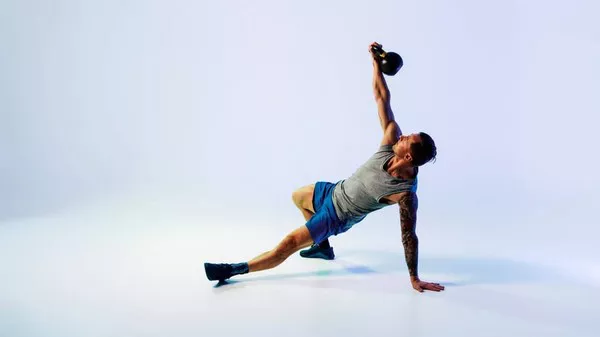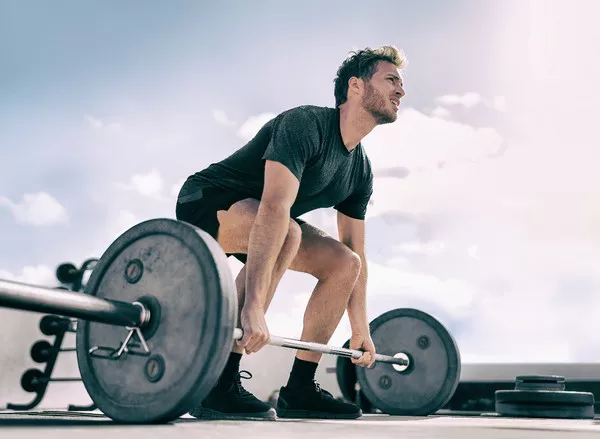Embarking on a journey to build strength doesn’t necessarily require a room full of weights. In this comprehensive guide, we explore the world of strength training without weights, delving into effective exercises, strategies, and the numerous benefits associated with this accessible and versatile approach. Whether you’re working out at home, traveling, or simply prefer a weight-free routine, this guide provides insights into crafting a robust strength training regimen using your body weight, resistance bands, and other creative techniques.
Understanding the Basics
Strength training without weights relies on using the body’s own resistance to build muscle and enhance overall strength. Fundamental exercises such as squats, lunges, push-ups, and planks form the backbone of bodyweight strength training. These exercises engage multiple muscle groups simultaneously, offering a holistic approach to building strength. Understanding proper form and technique is essential to maximize the effectiveness of these foundational movements and prevent injury. Whether you’re a beginner or an experienced fitness enthusiast, mastering the basics is key to a successful weight-free strength training journey.
The Power of Bodyweight Exercises
Bodyweight exercises offer a diverse range of movements that target various muscle groups, making them ideal for comprehensive strength training. Squats, for example, target the lower body, engaging the quadriceps, hamstrings, and glutes. Push-ups work the chest, shoulders, and triceps, while planks activate the core and stabilize the entire body. Crafting a well-rounded routine involves incorporating a variety of bodyweight exercises to ensure balanced development across all major muscle groups. This diversity not only enhances strength but also improves flexibility, stability, and overall functional fitness.
Progression Techniques
As with traditional weightlifting, progression is key to continually challenge your muscles and promote growth. In bodyweight strength training, progression involves increasing the difficulty of exercises as your strength improves. For squats, this might mean progressing from basic bodyweight squats to pistol squats. Similarly, push-ups can evolve into more challenging variations like diamond push-ups or one-arm push-ups. Introducing variations and increasing the intensity of exercises ensures a progressive and stimulating workout, allowing you to advance your strength training journey without the need for external weights.
Resistance Bands
While bodyweight exercises form the core of strength training without weights, incorporating resistance bands adds a new dimension of challenge and versatility. Resistance bands come in various strengths, allowing you to adjust the resistance level to suit your fitness level. Exercises such as banded squats, lateral walks, and banded push-ups provide additional resistance, targeting muscles in unique ways. Resistance bands are lightweight, portable, and easy to incorporate into your routine, making them a valuable tool for those seeking effective strength training without traditional weights.
Calisthenics
Calisthenics, the practice of using one’s body weight for resistance in dynamic movements, offers a dynamic and expressive approach to strength training without weights. From pull-ups and dips to handstands and muscle-ups, calisthenics movements require coordination, balance, and control. Progressing in calisthenics involves mastering the fundamental movements and gradually advancing to more complex exercises. This form of bodyweight training not only builds strength but also fosters a connection between mind and body, promoting functional fitness and body awareness.
Isometric Exercises
Isometric exercises involve holding a static position to engage and strengthen specific muscle groups. Examples include planks, wall sits, and static lunges. These exercises build strength by challenging muscles to maintain a fixed position against resistance. Isometric training is particularly effective for targeting stabilizing muscles and improving endurance. Integrating isometric exercises into your strength training routine without weights provides a unique and impactful way to enhance overall strength and muscle tone.
Plyometrics
For those looking to add an element of explosiveness to their weight-free strength training, plyometric exercises fit the bill. Plyometrics involve rapid and powerful movements, such as jump squats, box jumps, and burpees. These exercises not only build strength but also improve coordination, agility, and cardiovascular fitness. Plyometric training can be customized to suit various fitness levels, making it a valuable addition to a well-rounded strength training routine without the need for traditional weights.
High-Intensity Interval Training (HIIT)
Incorporating high-intensity interval training (HIIT) into your strength training routine without weights provides a time-efficient and effective approach to fitness. HIIT involves short bursts of intense exercise followed by brief periods of rest or lower-intensity activity. This method not only burns calories but also elevates heart rate and promotes strength development. Bodyweight exercises such as mountain climbers, burpees, and jumping jacks can be seamlessly integrated into a HIIT workout, offering a challenging and dynamic routine that enhances both cardiovascular fitness and strength.
Yoga and Pilates
Yoga and Pilates, though often associated with flexibility and core strength, also contribute significantly to overall body strength. Both practices involve controlled movements that engage various muscle groups, emphasizing core stability and body awareness. Incorporating yoga poses and Pilates exercises into your strength training routine without weights enhances flexibility, balance, and muscular endurance. These practices also promote relaxation and mindfulness, contributing to a holistic approach to fitness.
Functional Training
Strength training without weights is inherently functional, as it emphasizes movements that mimic real-life activities. Functional training focuses on building strength that directly translates to improved performance in daily tasks. Exercises like squats, lunges, and push-ups enhance the ability to lift, carry, and push, making everyday movements more efficient. Functional training not only builds strength but also improves overall functional fitness, enabling individuals to navigate daily activities with greater ease and reduced risk of injury.
Benefits of Strength Training Without Weights
The benefits of strength training without weights extend far beyond the development of muscle mass. This versatile approach to fitness offers:
Increased Flexibility: Bodyweight exercises often involve a full range of motion, promoting flexibility and joint mobility.
Enhanced Core Strength: Many bodyweight exercises engage the core, contributing to improved posture and stability.
Improved Body Composition: Strength training without weights helps reduce body fat and increase lean muscle mass, leading to a favorable body composition.
Convenience and Accessibility: This approach to strength training can be done anywhere, requiring minimal equipment and offering accessibility to individuals of all fitness levels.
Cost-Effective Fitness: Eliminating the need for traditional weights reduces the financial investment in fitness equipment, making strength training without weights a cost-effective option.
Versatility in Workouts: The variety of bodyweight exercises, combined with the option to incorporate resistance bands or other tools, provides endless possibilities for creating diverse and engaging workouts.
Reduced Joint Impact: Many bodyweight exercises are low-impact, reducing stress on joints and making strength training accessible for individuals with joint concerns.
Holistic Fitness: Strength training without weights promotes a holistic approach to fitness by incorporating elements of balance, coordination, and functional movement.
Designing Your Weight-Free Workout Routine
Crafting a weight-free workout routine involves considering your fitness goals, preferences, and current fitness level. Begin with a warm-up that includes dynamic movements to prepare your body for exercise. Incorporate a mix of bodyweight exercises, resistance band work, and other techniques discussed earlier to target various muscle groups.
Consider the following template for a well-rounded strength training routine without weights:
Warm-Up (5-10 minutes): Include dynamic movements such as jumping jacks, high knees, and arm circles to increase heart rate and prepare muscles for exercise.
Lower Body Exercises: Include squats, lunges, and leg raises to target the muscles of the lower body. Progress to more challenging variations as your strength improves.
Upper Body Exercises: Integrate push-ups, pull-ups, and dips to engage the muscles of the chest, back, shoulders, and arms. Modify exercises to match your current fitness level.
Core Strengthening: Include planks, bicycle crunches, and leg raises to target the core muscles. Focus on maintaining proper form throughout these exercises.
Resistance Band Work: Use resistance bands for additional challenge. Include exercises such as banded squats, rows, and lateral walks to engage muscles in new ways.
Plyometric Exercises: Integrate explosive movements like jump squats, burpees, or box jumps to enhance power and cardiovascular fitness.
Flexibility and Cool Down (5-10 minutes): Incorporate static stretches for major muscle groups to improve flexibility and promote recovery.
Listening to Your Body
As with any fitness routine, listening to your body is paramount. Adequate rest and recovery are essential components of a successful strength training program. Muscles need time to repair and grow stronger, and overtraining can lead to fatigue, decreased performance, and an increased risk of injury.
Incorporate rest days into your weekly routine, allowing your body time to recover. Pay attention to signals of fatigue, soreness, or discomfort, and adjust your workout intensity accordingly. Quality sleep, hydration, and a balanced diet also play crucial roles in supporting your body’s recovery and overall fitness.
Adapting to Individual Needs
Strength training without weights is adaptable to various fitness levels and can be easily modified to suit individual needs. Beginners may start with basic bodyweight exercises and gradually progress to more advanced movements. Those with existing injuries or physical limitations can modify exercises to accommodate their specific circumstances.
Conversely, individuals seeking greater challenges can explore advanced variations of bodyweight exercises, incorporate more resistance band work, or intensify their routines with plyometrics. The key is to tailor the workout to your fitness level, gradually progress, and consistently challenge yourself within your capabilities.
Closing Thoughts
Embarking on a journey of strength training without weights opens a world of possibilities for individuals seeking a versatile, accessible, and effective approach to fitness. From mastering foundational bodyweight exercises to exploring advanced movements and incorporating resistance bands, the options are limitless. This weight-free journey not only builds physical strength but also fosters a deeper connection between mind and body. Whether you’re a beginner or a seasoned fitness enthusiast, the path to strength without limits awaits, inviting you to discover the transformative power of weight-free training.
[inline_related_posts title=”You Might Be Interested In” title_align=”left” style=”list” number=”6″ align=”none” ids=”3279,3277,3275″ by=”categories” orderby=”rand” order=”DESC” hide_thumb=”no” thumb_right=”no” views=”no” date=”yes” grid_columns=”2″ post_type=”” tax=””]
































